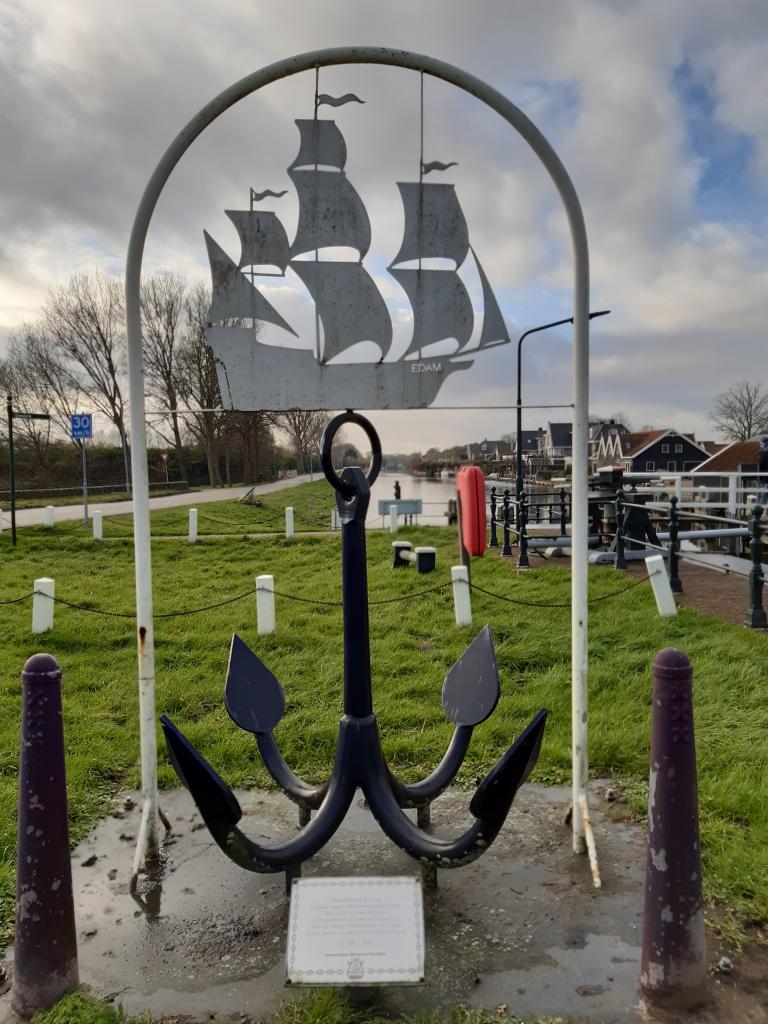Edam sea lock
A sea lock without the sea. Built in 1829 on the Zuiderzee, the construction of the Afsluitdijk in 1932 placed this lock on the IJsselmeer. The lock is still widely used by pleasure boats and the passage over the lock is an important link in walking routes.
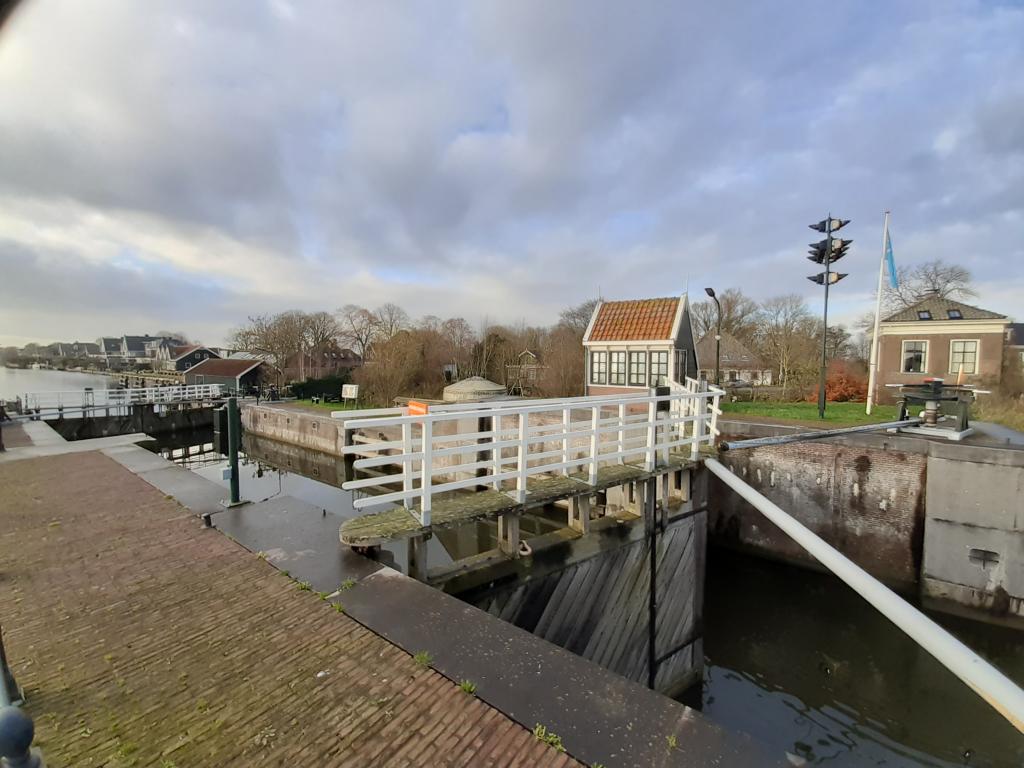
Open connection to the Zuiderzee
Edam received city rights in 1357 and, in addition, the town was allowed to dig a passage right through the town between the Zuiderzee and the Purmer Lake. Because of this connection, shipping and trade flourished. However, this new sea passage posed a danger to the area behind it. Low tide allowed the (sea) water to flow in and out, causing the land to erode. To counter this, Emperor Charles V decided in 1544 to close off the open sea gates with sluices.
Edam sea lock
In January 1825, a heavy storm surge raged across the Zuiderzee. After a dike breach at Durgerdam, Waterland and the Zaan region disappeared under water. This storm disaster prompted the water board responsible for the existing locks in Edam, the Hoogheemraadschap van de Uitwaterende Sluizen, to build a large new lock at the mouth of Edam harbor in the Zuiderzee. This replaced three old locks in one fell swoop. Completed in 1829, the new Sea Lock not only meant a great improvement in water safety, but was also beneficial to shipping.
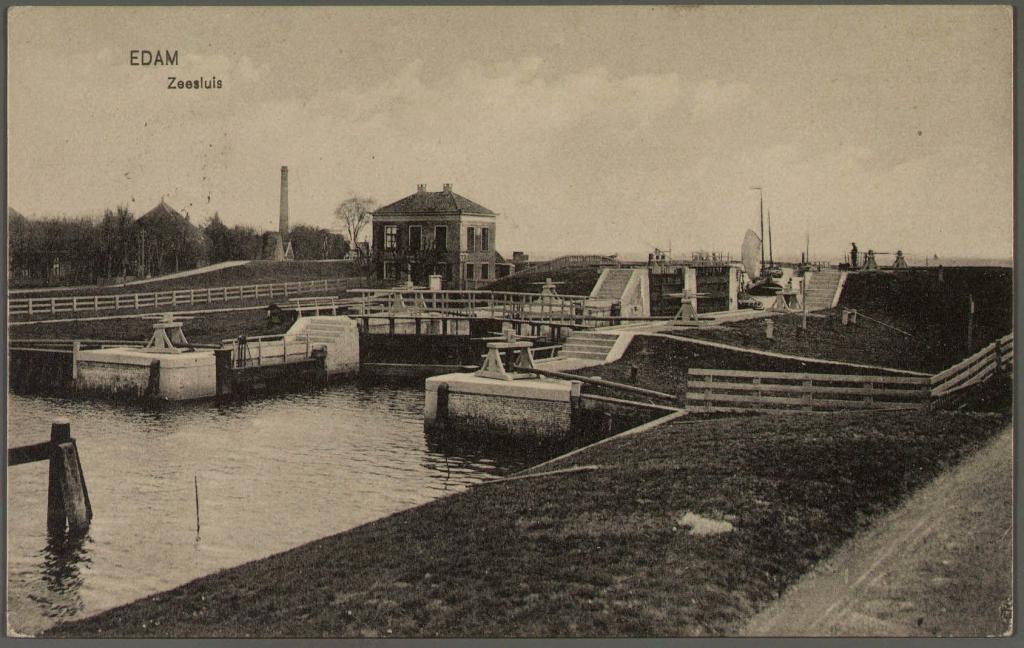
The lock is over 34 meters long and 9 meters wide, quite a large lock for the time. The cost totaled 200,000 guilders, one ton of which was covered from a loan for which William I granted permission on July 21, 1827. During construction, an experiment was conducted with artificial cement invented by the Carius factory in Utrecht, consisting of dredge from the IJ and clay.

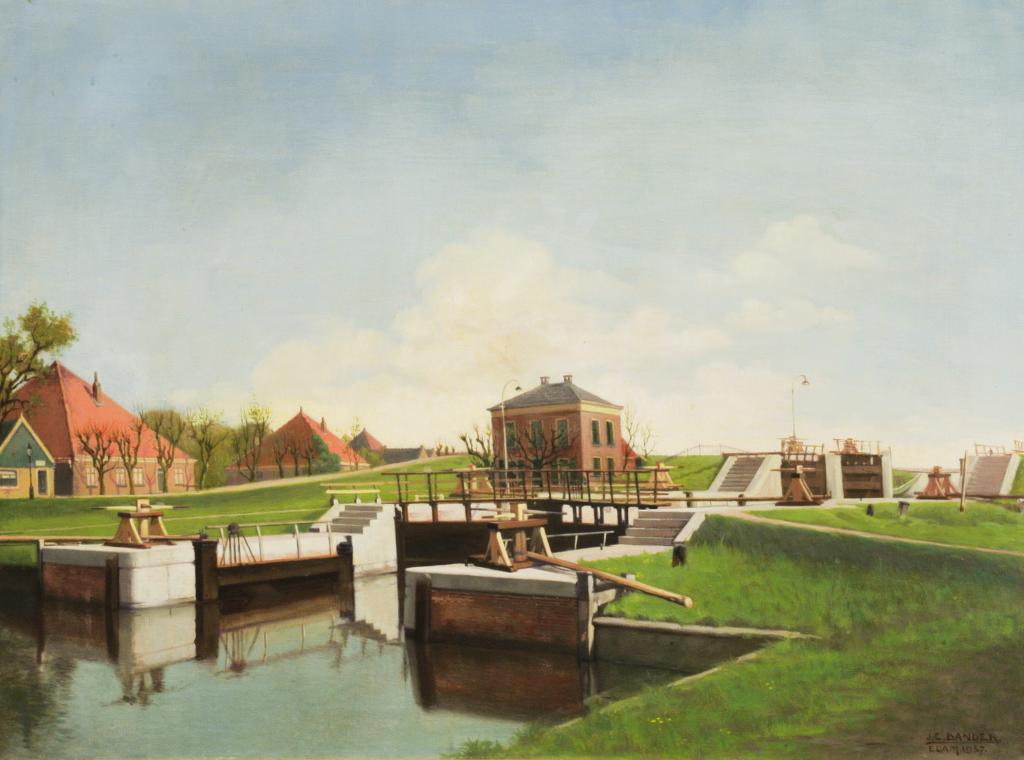
A bluestone plaque bearing the coat of arms of the Water Board of the Uitwaterende Sluizen and the names of the dikeworker and superintendents of "Uitwaterende Sluizen" was installed in the south lock wall on July 27, 1827.
The text on the stone reads:
'Founded and built in the years / 1828 and 1829 / Dike reeve: / F.C.W. Druyvesteyn / High Water Boards: / H. van Vladeracken / T. Weighmaster / W. Smit / Jr. Mr. D. van Foreest / Secretary Treasurer: / M.J. De Lange /
The first stone laid by / F.D.C. Druyvesteyn aged 12 years / H.G.C. van Vladeracken aged 8 years / Bouwmeesteren: / C.W.M. Klijn started / D. de Leeuw accomplished.'
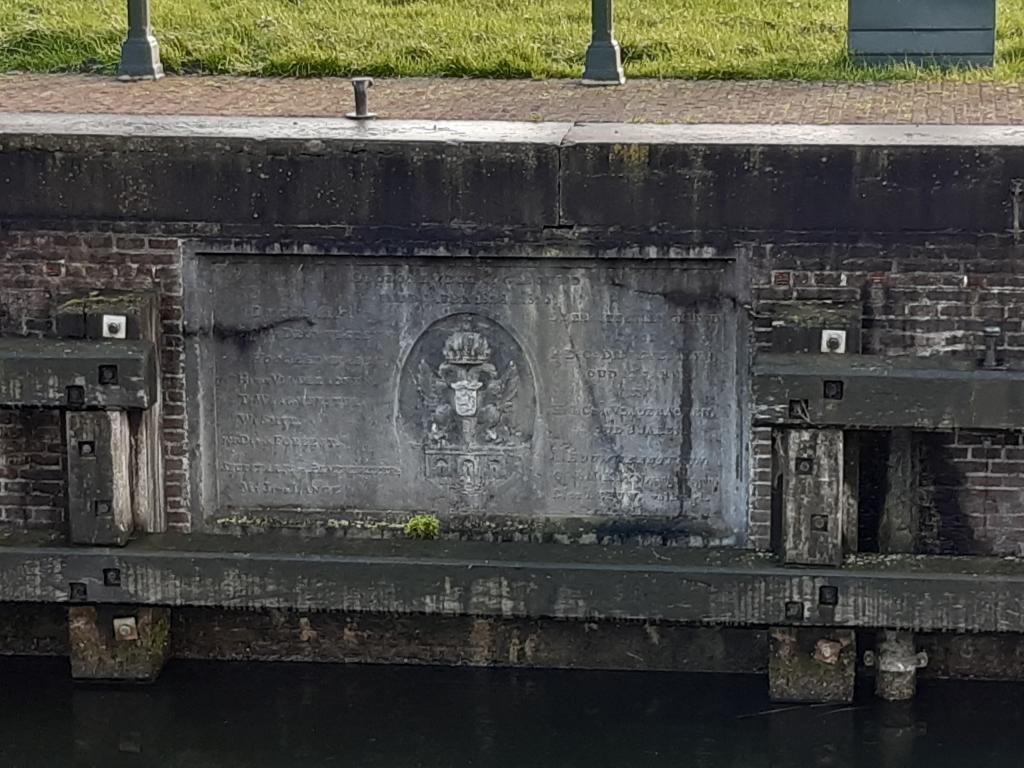
Defence Line of Amsterdam
The Edam sea lock is part of the Defence Line of Amsterdam. The Stelling is a circular military defense line with a radius of fifteen to twenty kilometers around Amsterdam, consisting of forts, batteries, ammunition magazines and inundation sluices. The Stelling is part of the Hollandse Waterlinies, protected as a UNESCO World Heritage Site. The Zeesluis had an important role in controlling inundations (the deliberate flooding) of polder De Zeevang. Through the Sea Lock, water could be let into the De Zeevang polder from the Zuiderzee via the Pompsluis in Edam and the Purmerringvaart. Too shallow for the enemy to pass through and too deep for men and horses.
Lock and renovations
Today, the lock connects the inland water with the Markermeer. To bridge the difference in height of 25 cm, ships can be lifted (up) or lifted (down) in the lock. A fish passage is present in the lock. Through the rinkets (inlet and outlet slides in the doors) fish can always swim through the lock.
During the winter of 2015 to 2016, the lock was renovated. Wooden parts were replaced and masonry and grouting cleaned and paintwork refurbished. The electrical system was renewed and modernized. New cast iron fencing was installed around the lock in 2019.
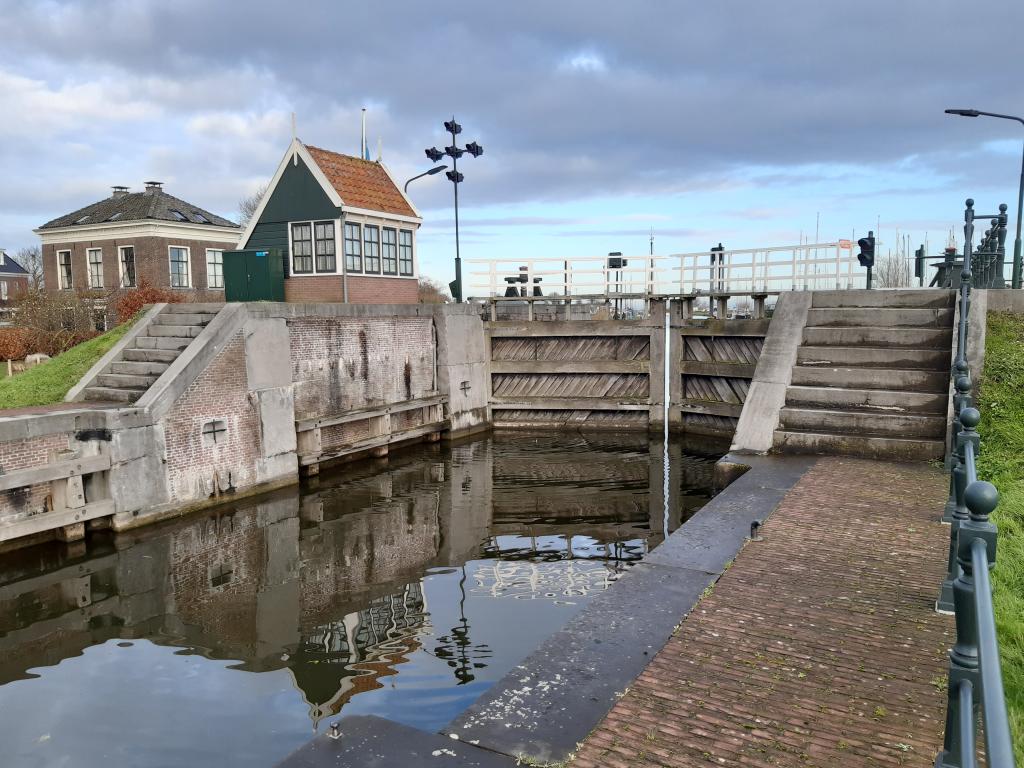
Complex
North of the lock is the modern guardhouse. Former lockkeeper Gerda Meulink spent nearly 25 years here. Not bored, she also made jewelry from felt on the sewing machine. Next door is the former lockkeeper's house from around 1829. In this building there was a tapper's, an additional income for the lockkeeper. Here liquor was served to passing boaters. For a long time the building also served as a meeting place for the board of the Water Board of the 'Uitwaterende Sluizen'.
South of the lock, a work of art was placed in 1996 by the Amsterdam Inland Navigation Society as a reminder of the history of shipbuilding and inland navigation in relation to the cities of Amsterdam and Edam.
